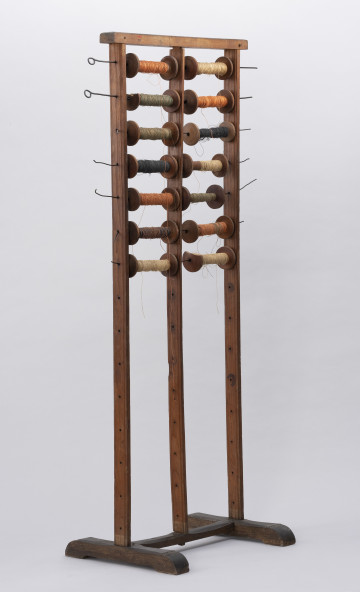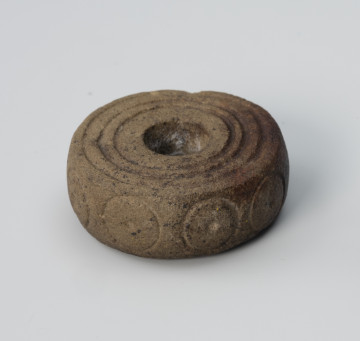
Weaving shuttle
1880 — 1920
National Museum in Szczecin
Part of the collection: Crafts of the Amazon Indians
Before factory-made and Western textiles came to the Ye'kuana Indians, men wore cotton muáho headbands, and women and girls wove red, blue and white muwaaju beads, traditionally made by Indian women on a simple single weaving workshop that is shaped like a bow. The Ye'kuana Indians live in small villages made up of several prominent families. They live in a communal ëttë house, which can accommodate 20-70 people. Each family has its own living space, and work is distributed among community members according to gender. The men are traditionally involved in spiritual life, the setting of rituals, and cultic objects. They hunt, clear the land for crops, make woodcarvings, weave, build boats and houses. Women cultivate the land and prepare food. They specialise in making kitchen utensils, pottery, weaving and producing ornaments and jewellery from beads, which, along with birds' feathers, are considered essential ornamental elements. Ye'kuana believe that they were the first owners of the beads, which they inadvertently lost. They recovered them only during trade with Europeans. Glass beads played a significant role in the trade between Europe and America (in English they are called trade beads). Indian beads are used to make earrings, necklaces and bracelets, among other things. The geometric patterns visible on them were sent by Wanadi, the world's creator, who wanted to protect Ye'kuan from illnesses and evil spirits. The Indians, believing in the magical power of patterns, also decorate with them the objects of everyday use, such as hollow vessels, oars, baskets, bows, arrows, stools and musical instruments, as well as their bodies.
Katarzyna Findlik-Gawron
Author / creator
Dimensions
cały obiekt: height: 24 cm, width: 52 cm
Object type
loincloth
Creation time / dating
Creation / finding place
Identification number
Location / status

1880 — 1920
National Museum in Szczecin

1801 — 1939
National Museum in Szczecin

900 — 1100
National Museum in Szczecin
DISCOVER this TOPIC
National Museum in Szczecin
DISCOVER this PATH
Educational path